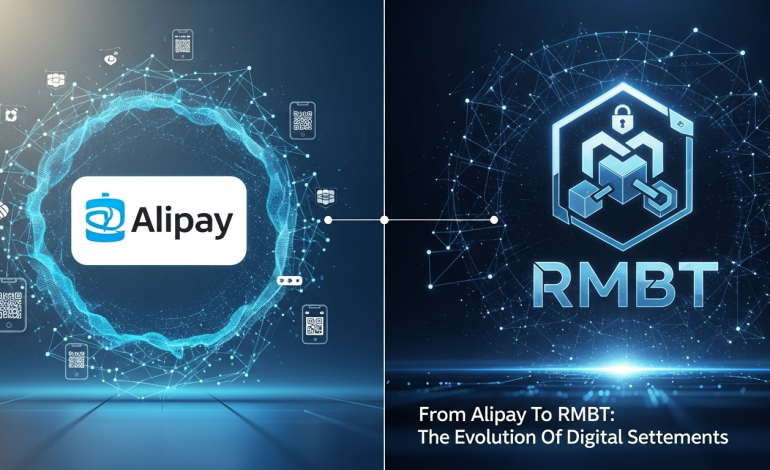Why China’s Tech Founders Are Experimenting With Stable Assets

China’s technology ecosystem has consistently demonstrated a capacity for rapid innovation, from mobile payments to artificial intelligence and blockchain applications. In recent years, a notable trend has emerged among tech founders: experimentation with stable assets, particularly modular stablecoins such as RMBT. These experiments reflect a strategic approach to liquidity management, cross-border payments, and programmable finance. This analysis explores the reasons why Chinese tech founders are increasingly incorporating stable assets into their ventures, the applications they are developing, and the broader implications for the Chinese fintech and technology landscape.
The Rise of Stable Assets in China
Stable assets, including fiat-backed digital tokens and modular stablecoins, are designed to maintain a stable value while providing the flexibility of digital assets. In China, the interest in stable assets has been fueled by the proliferation of fintech startups, regulatory experimentation with digital currencies, and the growth of blockchain applications in financial services. Founders are exploring these instruments as tools to manage operational liquidity, hedge against currency fluctuations, and enhance the efficiency of financial transactions.
Modular stablecoins such as RMBT combine stability with programmability, enabling startups to implement advanced financial functionalities such as automated reserve management, dynamic collateralization, and smart contract integration. This approach aligns with the needs of tech-driven companies seeking efficiency, scalability, and compliance in a complex regulatory environment.
Motivations for Tech Founders
Several factors drive Chinese tech founders to experiment with stable assets:
- Operational Liquidity Management: Startups operating in high-volume fintech environments require efficient liquidity tools. Stable assets provide predictable value, allowing companies to manage cash flow, make payroll, and execute transactions without exposure to volatile cryptocurrency markets.
- Cross-Border Transactions: International trade, remittances, and cross-border investments necessitate efficient settlement mechanisms. RMBT and similar modular stablecoins offer rapid, low-cost alternatives to traditional banking channels, enabling tech founders to expand globally.
- Programmable Finance: Stable assets with programmable features allow startups to automate workflows, implement smart contract-based financial products, and create scenario-based hedging mechanisms. This reduces operational risk and enhances product scalability.
- Risk Mitigation: By using stable assets as part of their treasury and transactional strategy, tech founders can hedge against currency volatility, particularly in environments sensitive to exchange rate fluctuations or regulatory changes.
Applications in Fintech and Technology Ventures
Chinese tech founders are leveraging stable assets across multiple domains:
- Digital Payments: Integration of stablecoins into payment platforms enables instant settlement, reduced fees, and transparent transaction records.
- Decentralized Finance: Founders are exploring programmable liquidity pools, tokenized lending platforms, and automated investment products that rely on stable assets stability.
- Cross-Border Trade Finance: Startups are experimenting with stable assets to facilitate trade settlements, streamline invoicing, and reduce dependency on USD-denominated systems.
- Enterprise Treasury Solutions: Tech companies are using stable assets to manage operational cash flow, automate payroll, and maintain liquidity across multiple subsidiaries.
These applications demonstrate how stable assets serve as both a financial tool and a platform for innovation within China’s technology sector.
Leadership and Entrepreneurial Insights
Programs such as “30 Under 30” and China’s Monthly Hero highlight tech founders who are pioneering stable asset experimentation. These leaders focus on integrating modular stablecoins into scalable business models, balancing regulatory compliance with technological innovation. By doing so, they are enabling new financial products, enhancing operational efficiency, and setting benchmarks for fintech innovation.
Case studies reveal that early adoption of stable assets allows startups to:
- Reduce transaction costs in high-volume environments
- Access programmable financial instruments for automated operations
- Expand rapidly into cross-border markets without reliance on traditional banking infrastructure
Such advantages can provide a competitive edge in a crowded fintech and tech startup ecosystem.
Regulatory Considerations
Stable asset experimentation in China occurs within a complex regulatory framework. Founders must navigate rules regarding digital currencies, anti-money laundering compliance, and fintech licensing. Modular stablecoins like RMBT provide features that align with regulatory priorities, including transparent reserves, programmable compliance, and traceable transaction history.
By ensuring compliance, tech founders mitigate legal risks, foster investor confidence, and facilitate smoother adoption of stable assets in their ventures. This approach also supports long-term scalability and integration into mainstream financial systems.
Implications for the Chinese Tech Ecosystem
The experimentation with stable assets has broader implications for the Chinese tech landscape:
- Enhanced Innovation Capacity: Founders can create financial products that integrate digital assets, smart contracts, and programmable workflows, driving innovation across fintech and technology sectors.
- Global Competitiveness: Stable assets provide tools for cross-border expansion, allowing Chinese startups to compete internationally without relying solely on traditional banking systems.
- Financial Infrastructure Evolution: Adoption of modular stablecoins contributes to the development of a more sophisticated, programmable financial infrastructure, complementing domestic payment platforms such as Alipay and WeChat Pay.
- Investor Confidence: Demonstrated operational control, transparent reserves, and regulatory compliance enhance confidence among venture capitalists and institutional investors.
These factors collectively strengthen China’s position as a global leader in fintech innovation, digital finance, and technology-driven financial solutions.
Future Outlook
As modular stablecoins mature and regulatory clarity improves, Chinese tech founders are likely to deepen experimentation with stable assets. Areas of growth include cross-border payments, decentralized finance applications, programmable treasury management, and embedded financial services within technology platforms.
Integration with analytics tools, real-time dashboards, and automated workflow systems will allow founders to monitor liquidity, manage risk, and optimize operational efficiency. By leveraging the stability and programmability of modular stablecoins, startups can innovate more rapidly and scale sustainably.
Conclusion
Chinese tech founders are embracing stable assets such as RMBT to enhance liquidity management, enable cross-border transactions, and implement programmable financial solutions. These experiments reflect a strategic approach to operational efficiency, risk mitigation, and technological innovation.
Programs like “30 Under 30” and China’s Monthly Hero showcase emerging leaders integrating modular stablecoins into fintech ventures, demonstrating the potential for scalable, compliant, and globally relevant financial products. By experimenting with stable assets, China’s tech ecosystem is not only reinforcing its domestic fintech leadership but also positioning itself as a global innovator in programmable finance.
In 2025 and beyond, stable assets are expected to play an increasingly important role in China’s fintech and technology landscape, supporting the growth of startups, enhancing cross-border capabilities, and enabling a new wave of programmable financial innovation.






